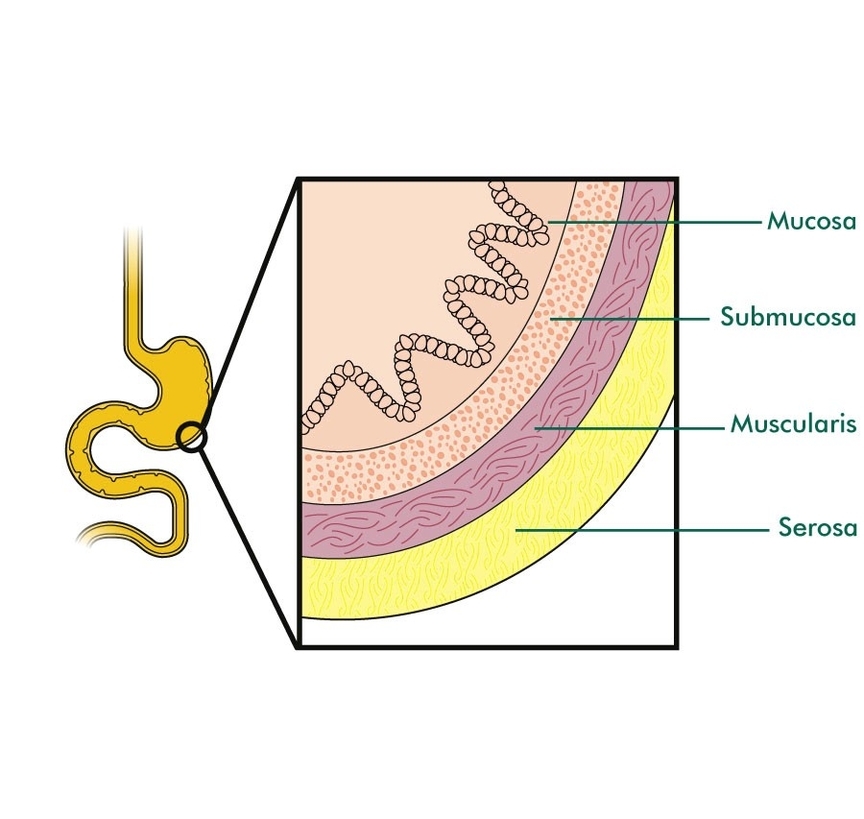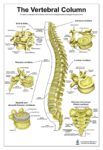The stomach, a vital organ in the gastrointestinal (GI) tract, plays a crucial role in digestion. Its primary functions include mixing food with stomach acid and breaking it down into smaller particles through chemical and mechanical processes. To achieve these functions, the stomach wall is composed of four distinct layers: the gastric mucosa, submucosa, muscularis externa, and serosa. Let’s delve into each layer in detail:
1. Gastric Mucosa:
– The innermost layer, the gastric mucosa, directly interfaces with the stomach’s contents. It consists of several components:
– Surface Mucous Cells: These simple columnar epithelial cells line the stomach’s inner surface. They secrete a protective mucus layer that shields the stomach wall from the corrosive effects of stomach acid.
– Gastric Pits: These invaginations extend into the mucosa and contain surface mucous cells. Gastric pits are essential for mucus secretion and maintaining the stomach’s integrity.
– Gastric Glands: These glands are responsible for producing various substances. They include:
– Parietal Cells: These secrete hydrochloric acid (HCl) and intrinsic factor, which aids in vitamin B12 absorption.
– Chief Cells: These produce pepsinogen, a precursor to the enzyme pepsin, which breaks down proteins.
– Enteroendocrine Cells: These release hormones such as gastrin, somatostatin, and histamine, regulating stomach acid secretion.
– Lamina Propria: A connective tissue layer beneath the epithelium that houses blood vessels, lymphatics, and immune cells.
– Muscularis Mucosae: Composed of two smooth muscle layers, it provides structural support to the mucosa.
2. Submucosa:
– The submucosa lies beneath the mucosa and consists of dense connective tissue. Key features include:
– Connective Tissue: Rich in blood vessels, nerves, and lymphatics, it nourishes the mucosa.
– Submucosal Plexus (Meissner’s Plexus): A network of nerve fibers controlling local blood flow and glandular secretion.
3. Muscularis Externa:
– The muscularis externa is responsible for stomach movement and churning. It comprises three layers of smooth muscle:
– Longitudinal Layer: Muscle fibers oriented along the stomach’s length.
– Circular Layer: Fibers encircling the stomach.
– Oblique Layer: Diagonal fibers that facilitate mixing and grinding of food.
– Between the circular and oblique layers lies the myenteric (Auerbach’s) plexus, which regulates muscle contractions.
4. Serosa:
– The outermost layer, the serosa, consists of connective tissue derived from the mesoderm. It envelops the stomach and continues as the parietal peritoneum.
– The serosa provides protection and allows the stomach to slide against adjacent structures during movement.
In summary, the stomach wall’s intricate layers work harmoniously to process food, transform it into chyme, and propel it toward the duodenum for further digestion and absorption. Remember the mnemonic “M.S.M.S” to recall the four layers: Mucosa, Submucosa, Muscularis Externa, and Serosa..


